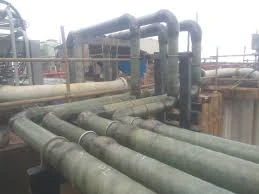
-
 Afrikaans
Afrikaans -
 Albanian
Albanian -
 Amharic
Amharic -
 Arabic
Arabic -
 Armenian
Armenian -
 Azerbaijani
Azerbaijani -
 Basque
Basque -
 Belarusian
Belarusian -
 Bengali
Bengali -
 Bosnian
Bosnian -
 Bulgarian
Bulgarian -
 Catalan
Catalan -
 Cebuano
Cebuano -
 China
China -
 China (Taiwan)
China (Taiwan) -
 Corsican
Corsican -
 Croatian
Croatian -
 Czech
Czech -
 Danish
Danish -
 Dutch
Dutch -
 English
English -
 Esperanto
Esperanto -
 Estonian
Estonian -
 Finnish
Finnish -
 French
French -
 Frisian
Frisian -
 Galician
Galician -
 Georgian
Georgian -
 German
German -
 Greek
Greek -
 Gujarati
Gujarati -
 Haitian Creole
Haitian Creole -
 hausa
hausa -
 hawaiian
hawaiian -
 Hebrew
Hebrew -
 Hindi
Hindi -
 Miao
Miao -
 Hungarian
Hungarian -
 Icelandic
Icelandic -
 igbo
igbo -
 Indonesian
Indonesian -
 irish
irish -
 Italian
Italian -
 Japanese
Japanese -
 Javanese
Javanese -
 Kannada
Kannada -
 kazakh
kazakh -
 Khmer
Khmer -
 Rwandese
Rwandese -
 Korean
Korean -
 Kurdish
Kurdish -
 Kyrgyz
Kyrgyz -
 Lao
Lao -
 Latin
Latin -
 Latvian
Latvian -
 Lithuanian
Lithuanian -
 Luxembourgish
Luxembourgish -
 Macedonian
Macedonian -
 Malgashi
Malgashi -
 Malay
Malay -
 Malayalam
Malayalam -
 Maltese
Maltese -
 Maori
Maori -
 Marathi
Marathi -
 Mongolian
Mongolian -
 Myanmar
Myanmar -
 Nepali
Nepali -
 Norwegian
Norwegian -
 Norwegian
Norwegian -
 Occitan
Occitan -
 Pashto
Pashto -
 Persian
Persian -
 Polish
Polish -
 Portuguese
Portuguese -
 Punjabi
Punjabi -
 Romanian
Romanian -
 Russian
Russian -
 Samoan
Samoan -
 Scottish Gaelic
Scottish Gaelic -
 Serbian
Serbian -
 Sesotho
Sesotho -
 Shona
Shona -
 Sindhi
Sindhi -
 Sinhala
Sinhala -
 Slovak
Slovak -
 Slovenian
Slovenian -
 Somali
Somali -
 Spanish
Spanish -
 Sundanese
Sundanese -
 Swahili
Swahili -
 Swedish
Swedish -
 Tagalog
Tagalog -
 Tajik
Tajik -
 Tamil
Tamil -
 Tatar
Tatar -
 Telugu
Telugu -
 Thai
Thai -
 Turkish
Turkish -
 Turkmen
Turkmen -
 Ukrainian
Ukrainian -
 Urdu
Urdu -
 Uighur
Uighur -
 Uzbek
Uzbek -
 Vietnamese
Vietnamese -
 Welsh
Welsh -
 Bantu
Bantu -
 Yiddish
Yiddish -
 Yoruba
Yoruba -
 Zulu
Zulu
Advancements in Reinforced Plastic Pipe Technology and Its Applications in Modern Infrastructure
Reinforced Plastic Pipe A Versatile Solution for Modern Infrastructure
In recent years, the construction and plumbing industries have seen a significant shift towards the use of advanced materials. Among these innovations, reinforced plastic pipes (RPP) have emerged as a highly effective alternative to traditional piping systems. This article will explore the benefits and applications of reinforced plastic pipes, highlighting their importance in modern infrastructure.
Reinforced plastic pipes are primarily composed of a thermosetting or thermoplastic resin that is reinforced with materials such as fiberglass, carbon fiber, or steel. This composite structure enhances the mechanical properties of the pipe, offering improved strength, durability, and chemical resistance compared to standard plastic pipes. The reinforcement allows RPP to withstand high pressures and temperatures, making it suitable for various applications, including water supply, sewage treatment, and industrial processes.
One of the standout features of reinforced plastic pipes is their resistance to corrosive substances. Unlike metal pipes, which can deteriorate over time due to rust and oxidation, RPP maintains its integrity when exposed to chemicals and harsh environmental conditions. This resistance is particularly valuable in industries such as chemical processing, where pipes are often required to transport aggressive fluids.
The lightweight nature of reinforced plastic pipes is another significant advantage
. Traditional materials like steel and concrete can be cumbersome, leading to increased transportation and installation costs. In contrast, RPP is easy to handle and install, which can significantly reduce labor costs and installation time. Their lighter weight also translates into lower transportation costs, making them an economical choice for large-scale projects.reinforced plastic pipe

Reinforced plastic pipes are also known for their flexibility and adaptability. They can be produced in various sizes and shapes, allowing for the customization needed in different applications. Whether it’s in residential plumbing, commercial buildings, or infrastructure projects, RPP can be tailored to meet specific requirements. Additionally, the flexibility of these pipes often allows for installation in areas with limited access or in challenging terrain, where traditional materials might not be feasible.
Another critical aspect of reinforced plastic piping is its longevity. With a lifespan that often exceeds 50 years, RPP contributes to reduced maintenance costs and fewer replacements, which is particularly advantageous for municipal and industrial applications. This extended durability also ties into sustainability, as using longer-lasting materials minimizes the need for frequent replacements and reduces waste.
Furthermore, the installation of reinforced plastic pipes is generally simpler and more efficient. The joints can be glued or mechanically fitted, and the pipes can be connected without the need for elaborate support systems. This ease of installation can significantly expedite project timelines, allowing for faster completion of construction and infrastructure projects.
Despite the numerous benefits, it's important to note that reinforced plastic pipes may have some limitations. They may not be suitable for every application, such as those requiring extremely high heat resistance or those that need the structural integrity that can only be provided by traditional materials like concrete or steel. Therefore, careful evaluation of the project requirements and conditions is essential when selecting the appropriate piping material.
In conclusion, reinforced plastic pipes represent a significant advancement in piping technology, providing a versatile solution for various applications. Their unique combination of strength, resistance to corrosion, lightweight nature, and longer lifespan make them an ideal choice for many modern infrastructure projects. As industries continue to evolve and seek more sustainable and efficient solutions, the adoption of reinforced plastic pipes is likely to grow, paving the way for safer and more reliable systems in the future.
Latest news
-
Exploring the Benefits of Top Hammer Drifter Rods for Enhanced Drilling PerformanceNewsJun.10,2025
-
High-Precision Fiberglass Winding Machine for GRP/FRP Pipe Production – Reliable & Efficient SolutionsNewsJun.10,2025
-
FRP Pipes & Fittings for Shipbuilding - Corrosion-Resistant & LightweightNewsJun.09,2025
-
Premium FRP Flooring Solutions Durable & Slip-ResistantNewsJun.09,2025
-
Premium Fiberglass Rectangular Tanks Durable & Lightweight SolutionNewsJun.09,2025
-
Tapered Drill String Design Guide Durable Performance & UsesNewsJun.09,2025









